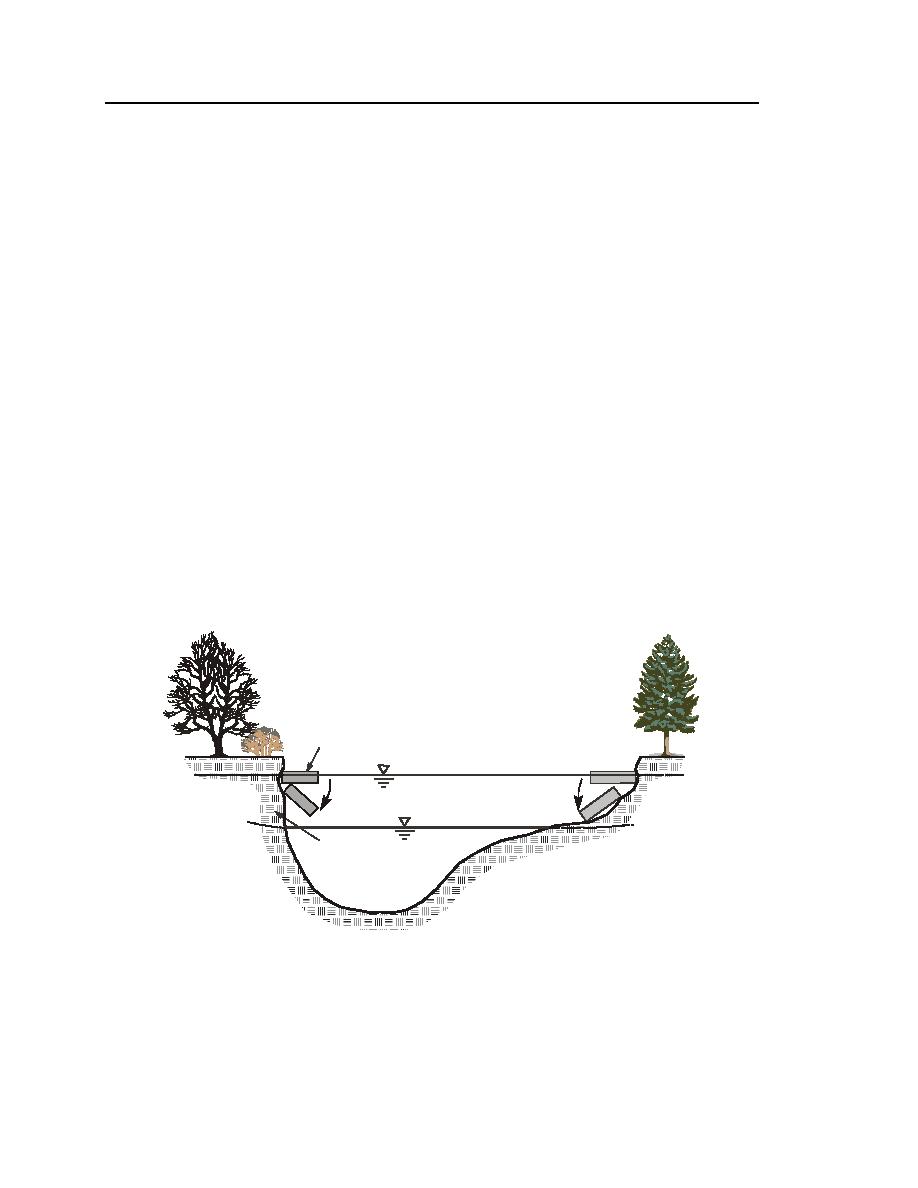
26
ERDC/CRREL TR-02-14
Several studies (Harlan and Nixon 1978, Reid 1985) have found that south-
facing riverbanks do not freeze as deeply, all else being equal, as north-facing
riverbanks do. South-facing riverbanks (in the northern hemisphere) receive more
insolation (energy in the form of short-wave radiation from the sun) and may
undergo more diurnal freezethaw cycles (Gatto 1995). The result has yet to be
determined, but the effect may be important here because of the eastwest orien-
tation of the Fort Peck reach.
Bankfast ice loading of riverbanks
Figure 14 illustrates ways in which bankfast ice might weaken a riverbank.
The ice cover freezes into the riverbank. The size of the ice root is limited by the
groundwater elevation and temperature and by the nature of the riverbank mate-
rial. When the water level in the channel drops and the ice cover breaks up, ice
that remains attached to the riverbank rotates and tears a portion of the riverbank
as it drops. It is difficult to get direct field observations of this mechanism for
bankfast ice attached to vertical riverbanks. There is evidence for a related
mechanism commonly termed plucking, which is used with regard to the loss of
riprap stones frozen to an ice sheet. Wuebben (1995), for instance, discussed
plucking concerns in the design of riprap for riverbank protection.
Shorefast ice
collapses
Freeze-up level
Low-flow level
Silty-clayey
banks
Figure 14. Collapse of shorefast ice, and possibly bank material, following
lowering of the flow stage. At present, shorefast ice effects on bank erosion
are not well known.



 Previous Page
Previous Page
